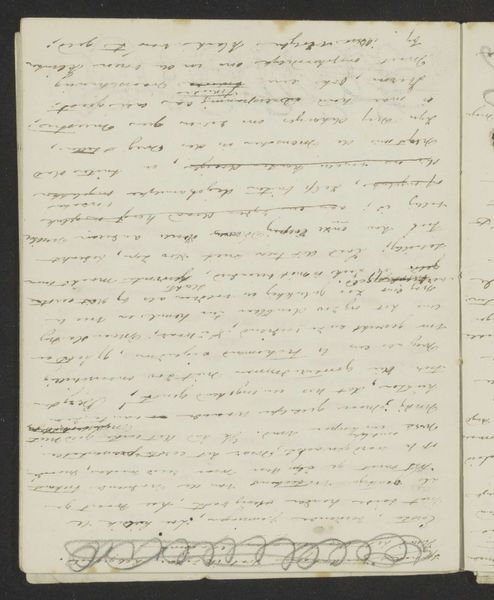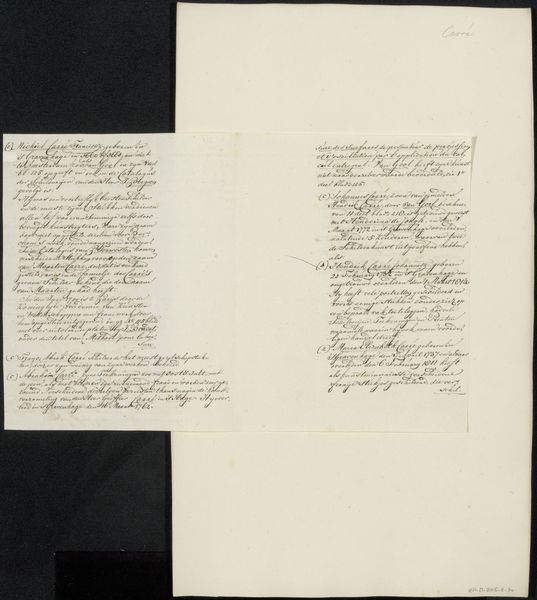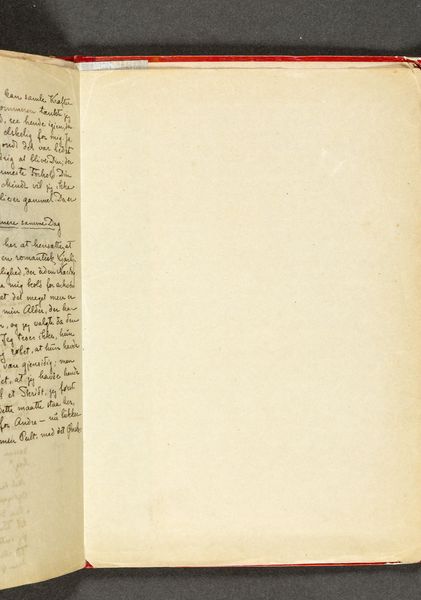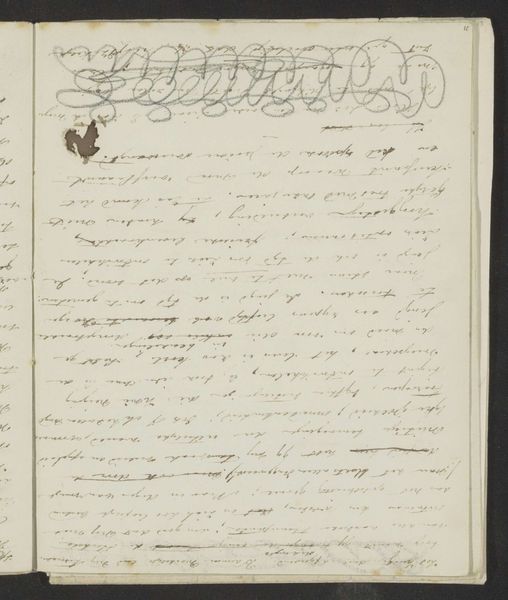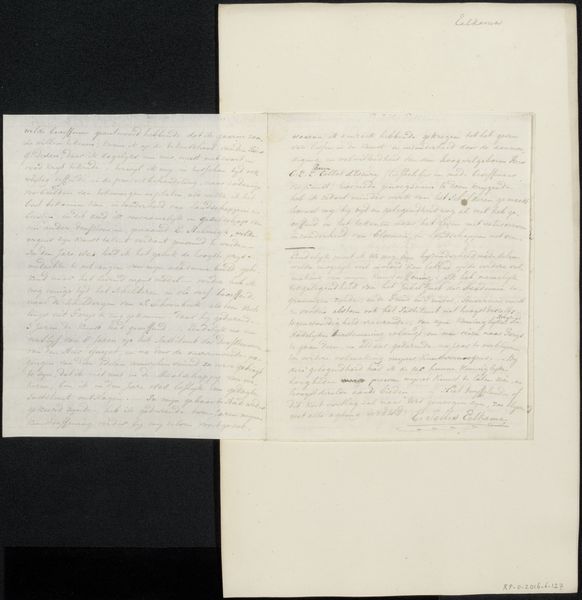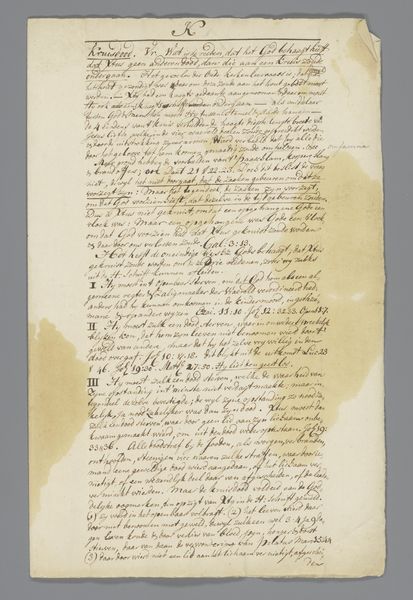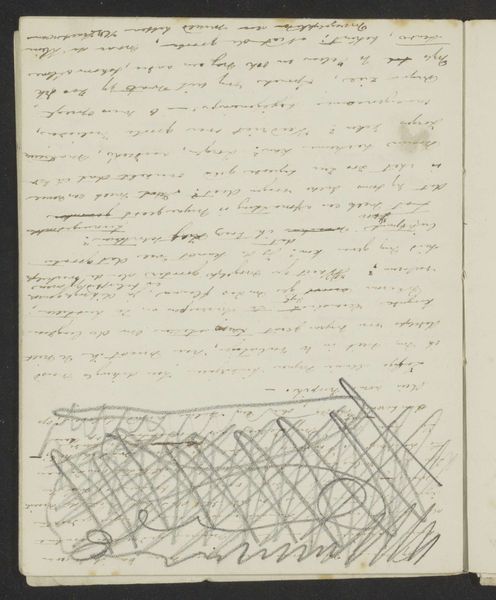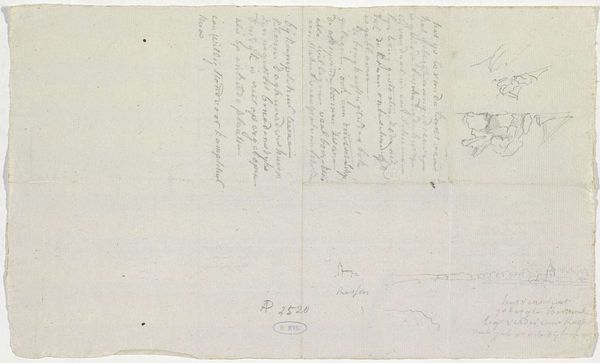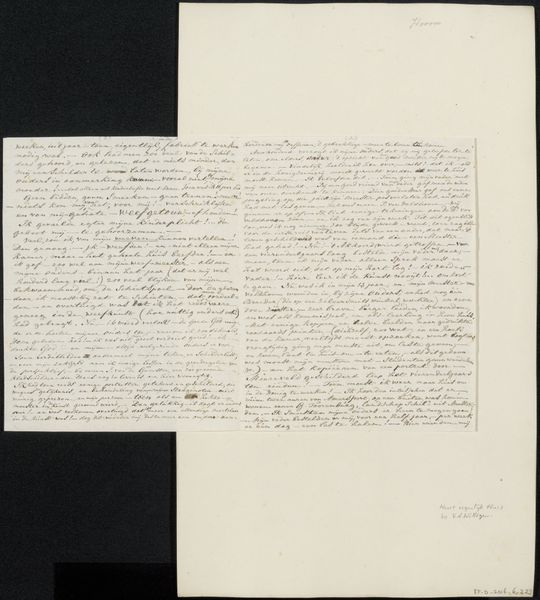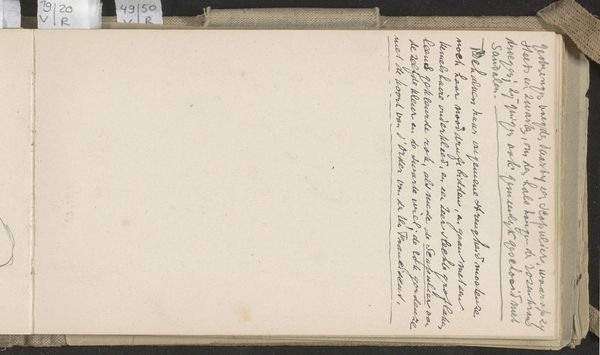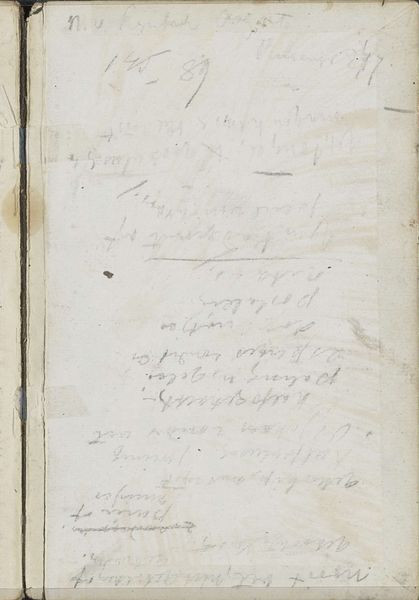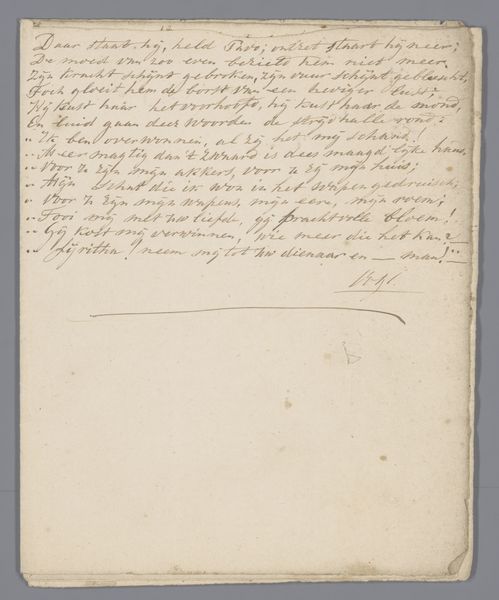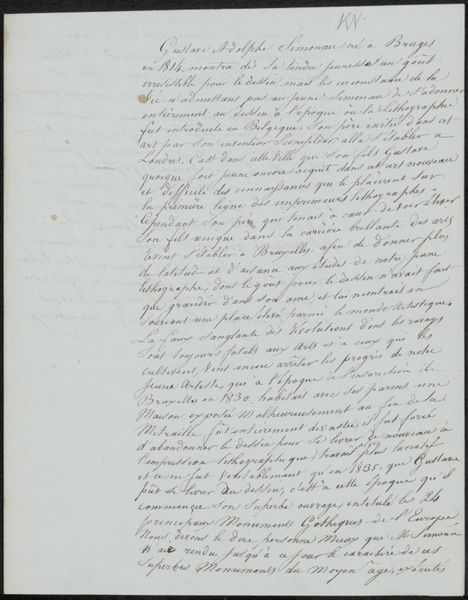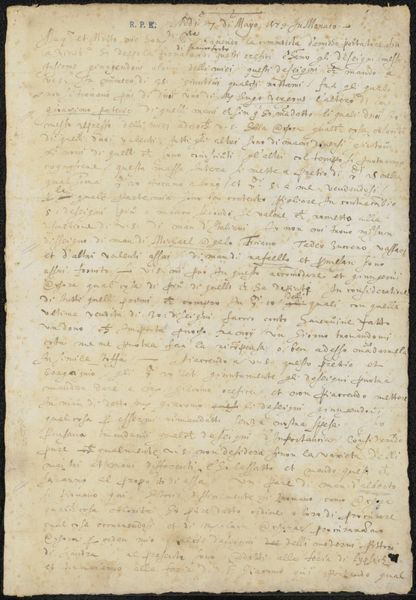
Copyright: Rijks Museum: Open Domain
Curator: This is a page from a notebook by Maria Vos, a Dutch artist working primarily between 1834 and 1906. It's simply called "Notitie", made with pen on paper, and is currently held here at the Rijksmuseum. Editor: It strikes me as intensely private—the hurried, almost frantic, handwriting suggests someone trying to capture thoughts as quickly as they surface. There's a sense of immediacy here. Curator: Absolutely. Sketchbooks, in general, are very intimate spaces, aren't they? This kind of textual note provides invaluable insights. The very act of writing and drawing is laden with significance— a tangible manifestation of thought processes. What do you make of that faded script at the edges? Editor: It reminds me of a palimpsest, the way the old layers of writing and meanings subtly affect the current interpretation. You can only catch glimpses, whispers, which evokes for me the transience and ephemerality of life during Vos' time. Perhaps these notes were ways of contending with that constant loss and the marginalization women artists like her were subjected to? Curator: That's a fascinating reading of it. I find the hand-drawn type and stylised text so fascinating, especially if we see this as landscape style in some respects, and if so, is that maybe a sort of commentary from a woman who was a landscape artist in her time? It opens the image up to lots of interpretations when you consider all those elements, doesn't it? Editor: It certainly does. To me, "Notitie" serves as a poignant reminder that art-making, and writing itself, can function as quiet forms of resistance, or perhaps, just existence and that this deeply personal practice by women deserves celebration. Curator: It certainly gives a voice to Maria Vos that transcends the canvas! Editor: I agree. It compels us to consider the multitude of untold stories residing just beyond the frame.
Comments
No comments
Be the first to comment and join the conversation on the ultimate creative platform.
